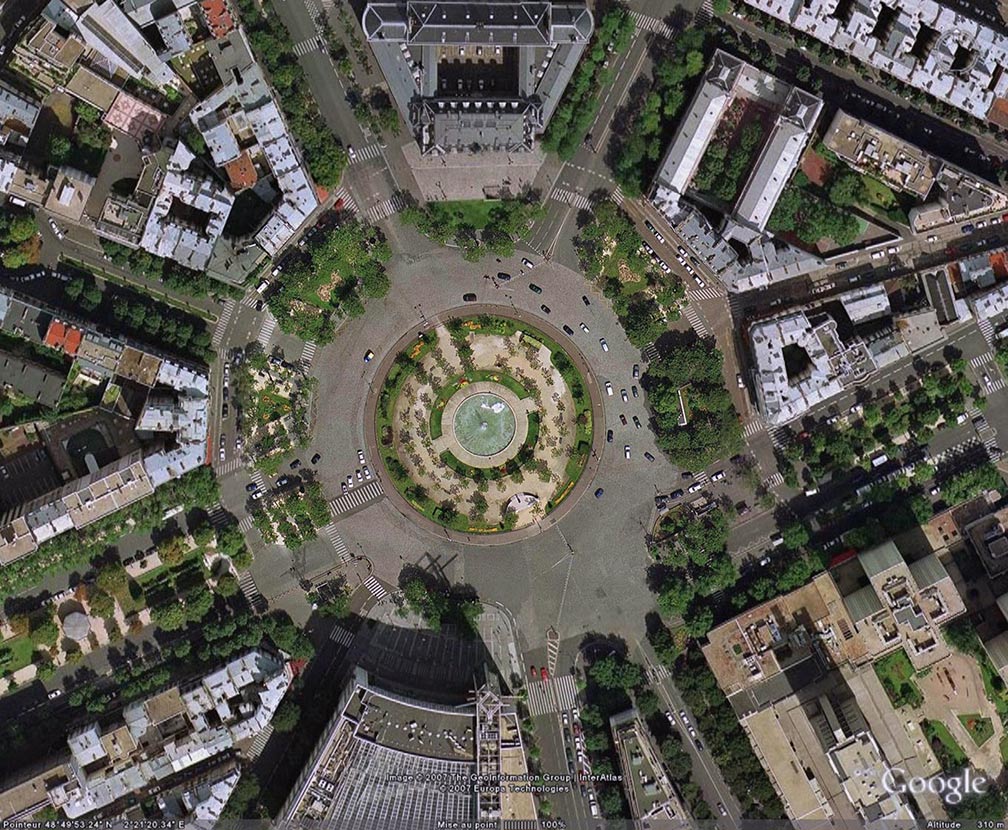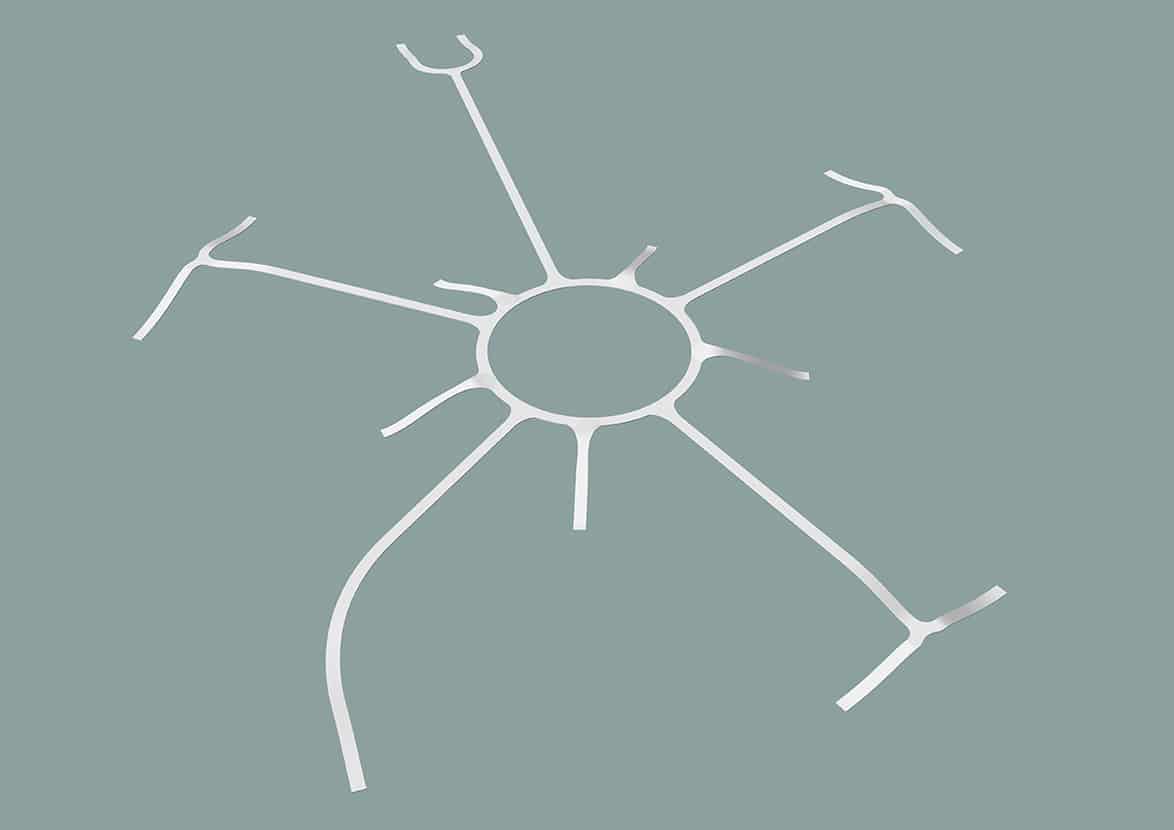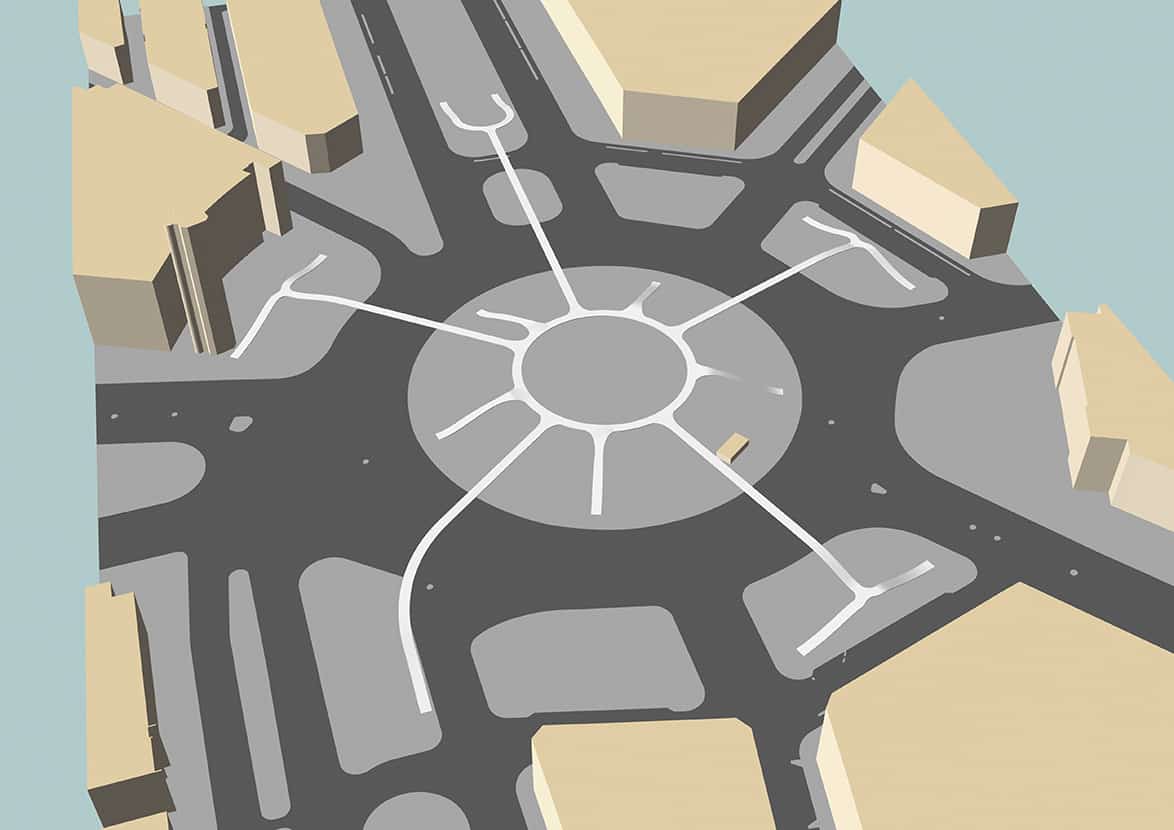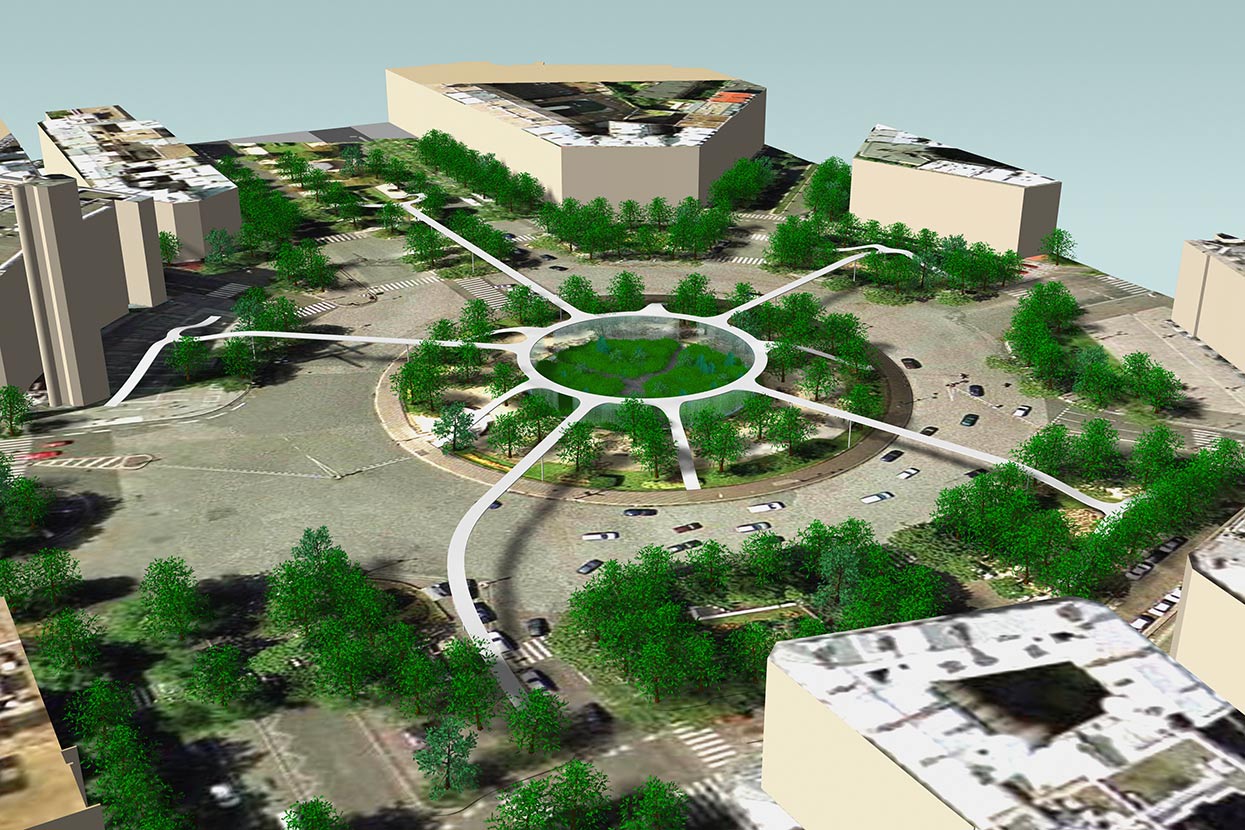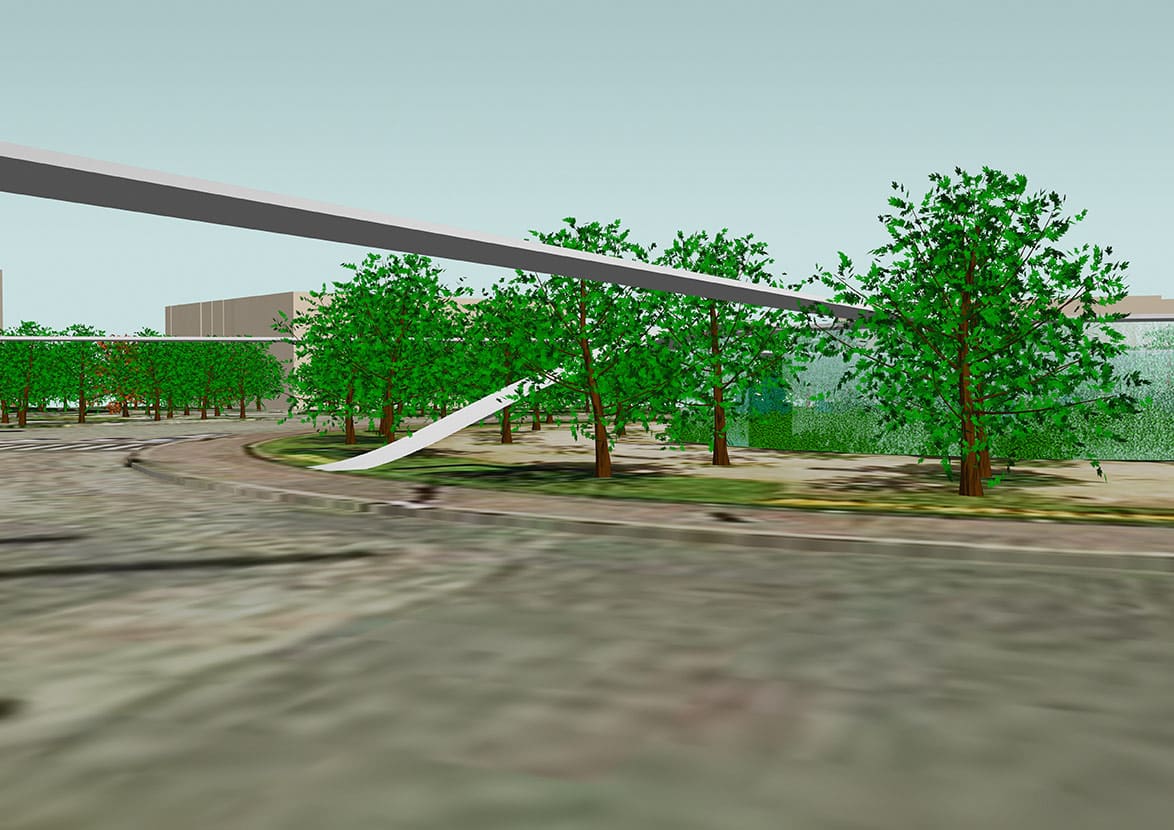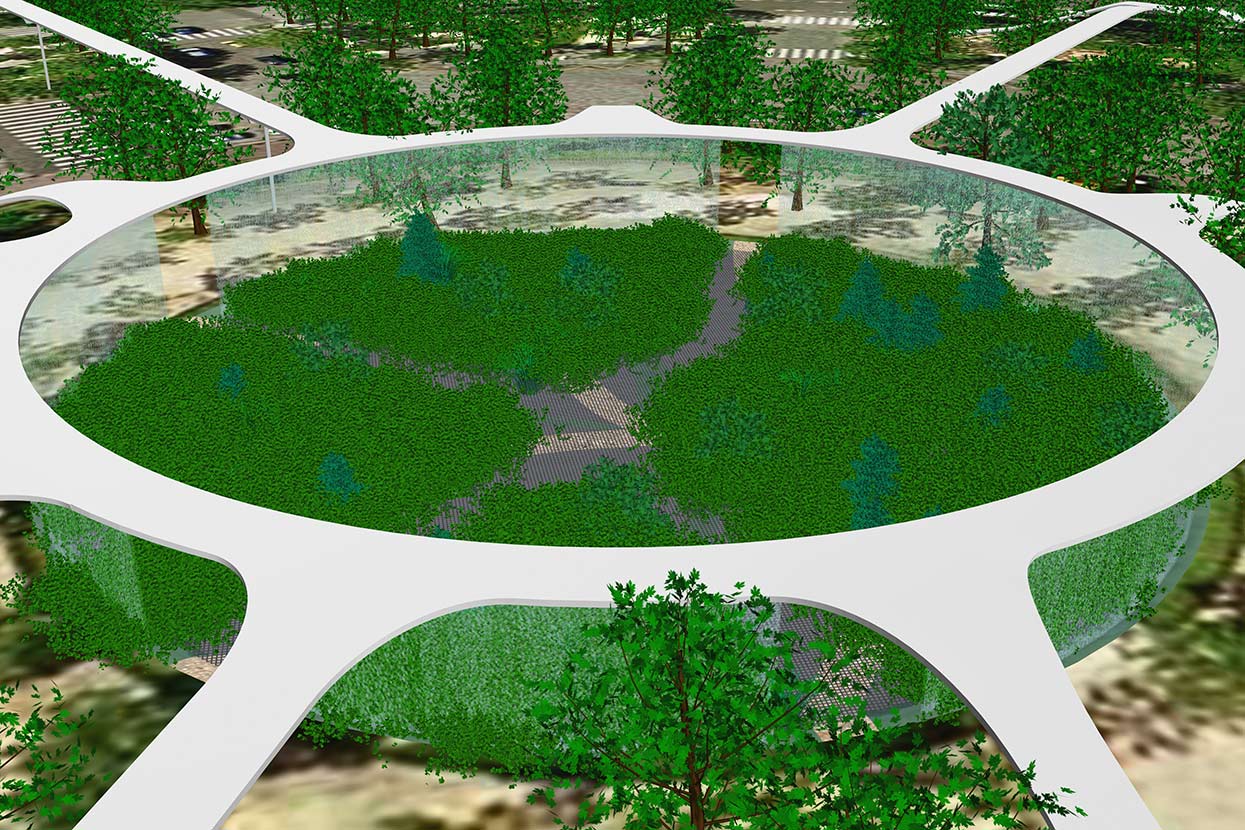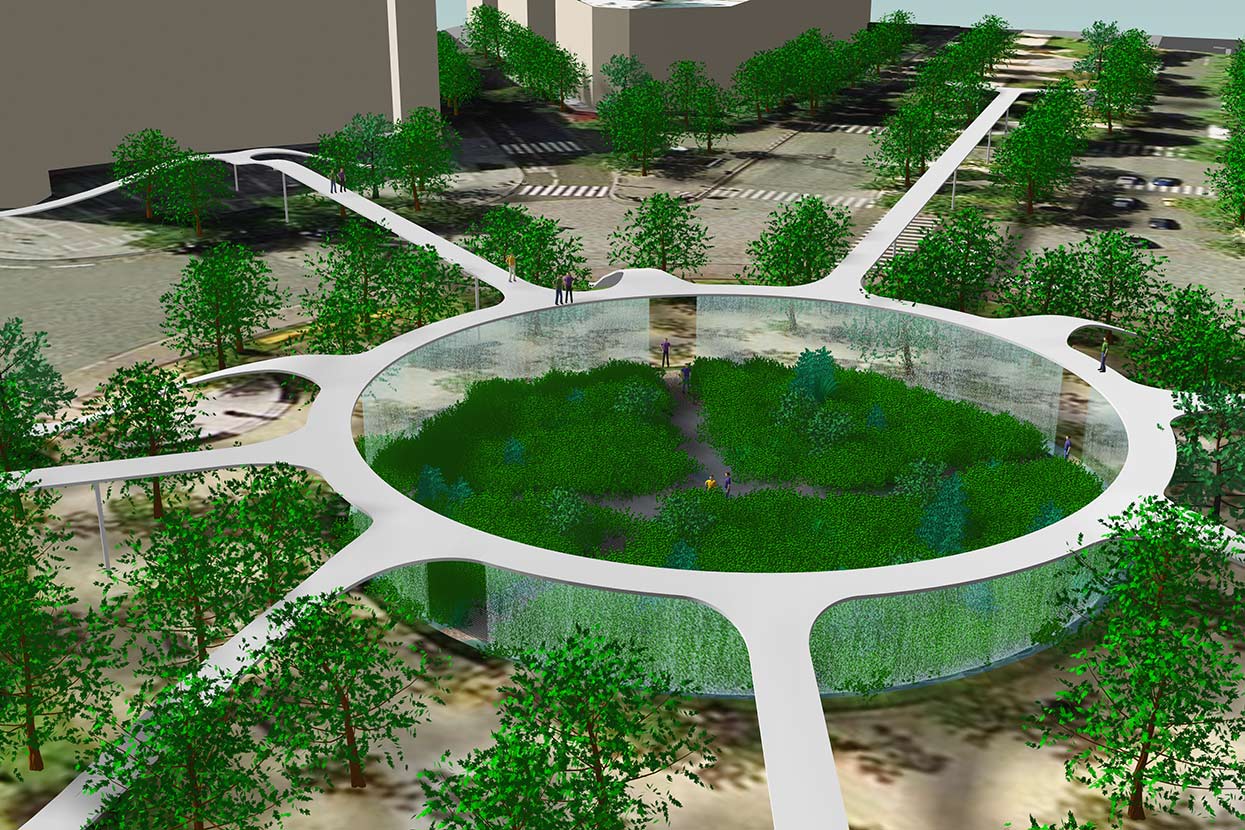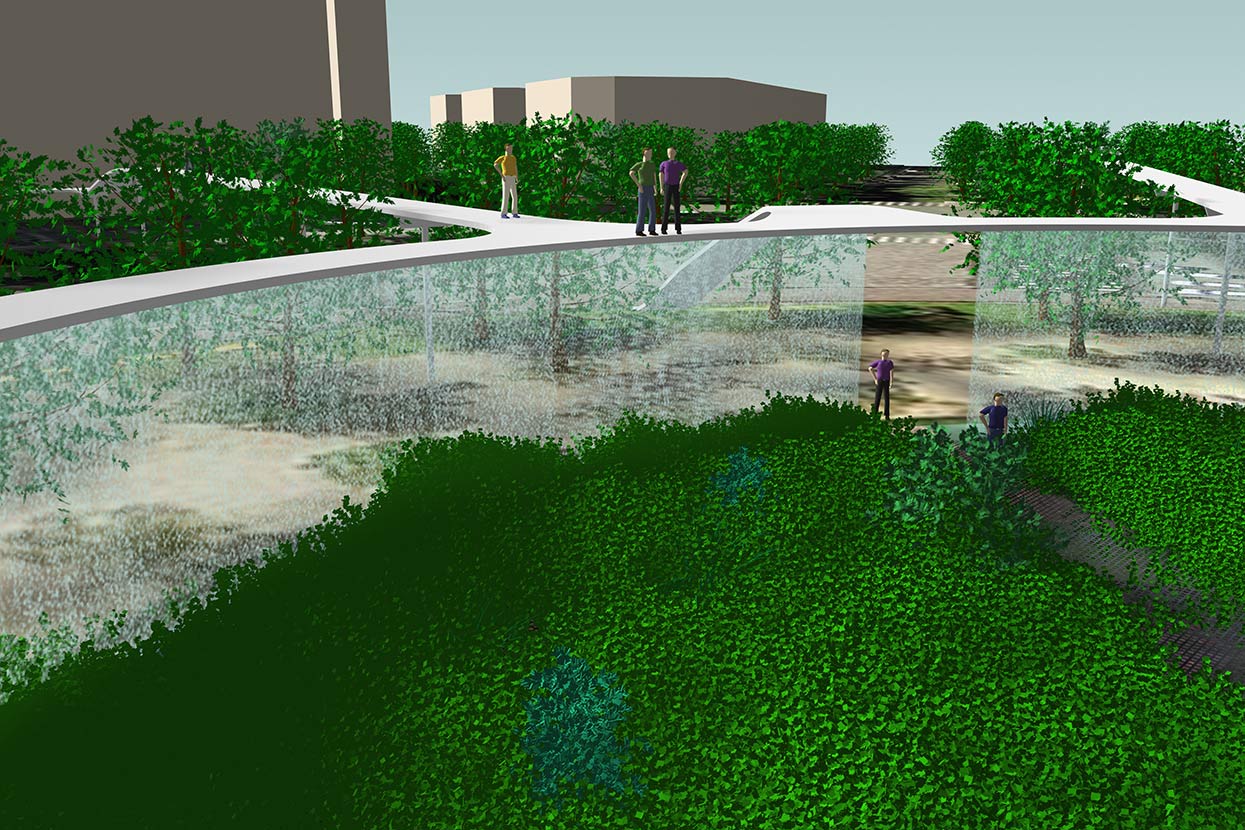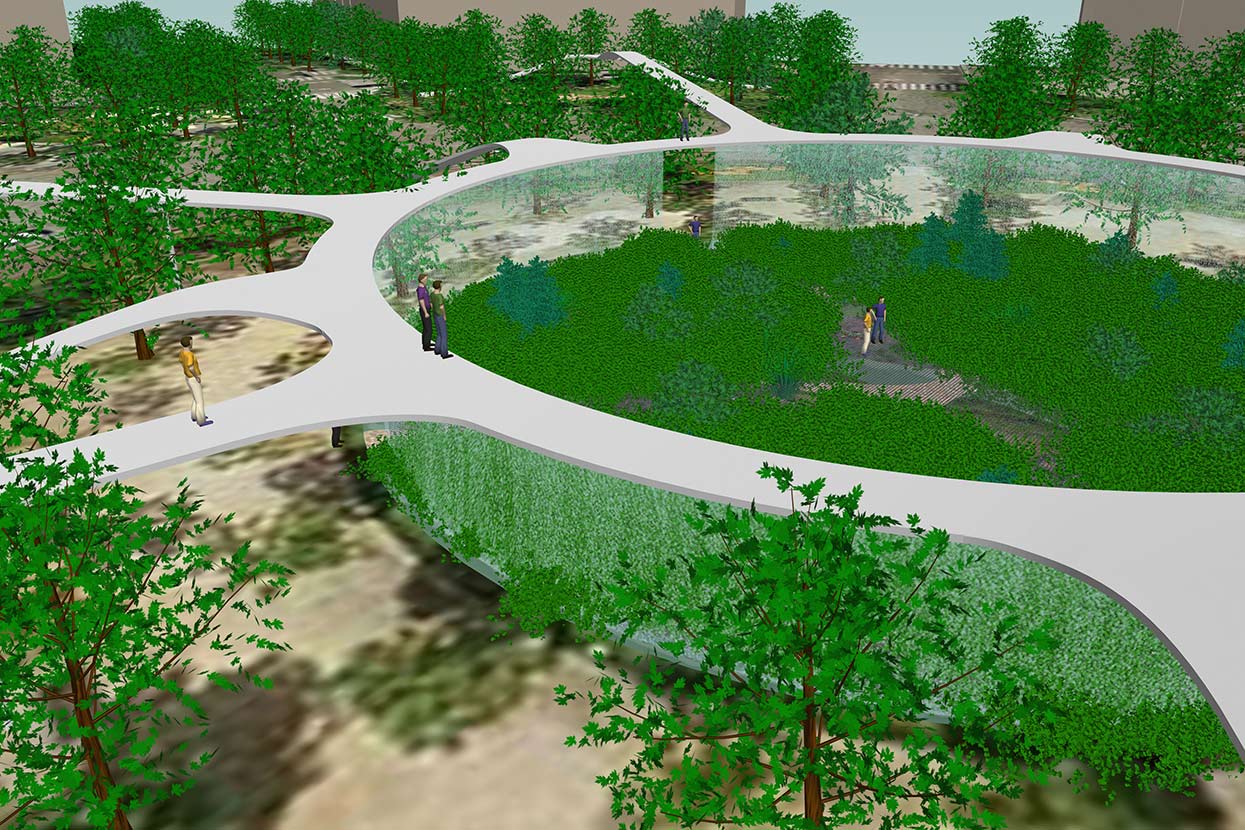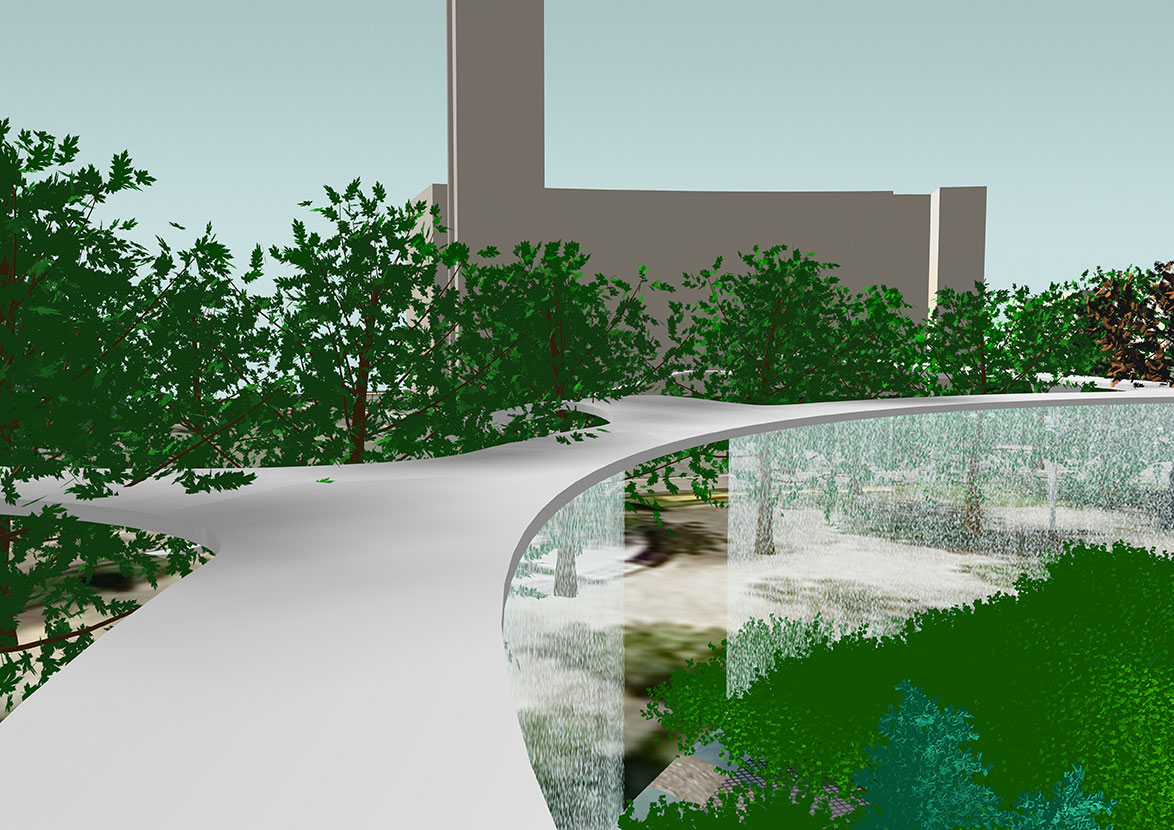The Place d’Italie is a kind of ‘non-place,’ a place that pedestrians dread having to cross because of the wide and endless flow of traffic. Getting around it on foot is a hazardous expedition, with the placement of the lights and crosswalks making one feel like an afterthought to the cars. And the giant leaves of the Paulownia trees surrounding the roundabout all but conceal the fountain in the summer. Still, the Place d’Italie sits at the confluence of several diverse Parisian neighborhoods, including the bourgeois Fifth, a thriving student neighbourhood, and the more local-flavored Thirteenth, featuring the city’s Chinatown, among others.
The idea is to create an actual island. An autonomous ecosystem, requiring a minimum of maintenance. This ‘island’ would be separated from the surrounding city by a curtain of water. Collected rainwater, which would vary in flow from season to season. The pump that would circulate this water would be powered by solar panels. In contrast to the isolation of the plant life, several footbridges would allow pedestrians to access this landscape, either to stroll around it or just to cross the roundabout more directly, overlooking both the nature and the traffic below.
People would also be able to explore this strange garden at the ground level, by entering through the curtain of water that falls from the overhead walkways (suspended at the height of the leaves) all the way to the ground below. The flow of this water would pause whenever a pedestrian arrived to pass through.
We often play games with geography in gardens. So why not with history too? Evoking this primitive nature where it may once have been, where it might again overtake, hints at a power, a beauty, but also strikes a fear. We feel on the verge of having eradicated it from our planet, but there are those of us who can still envision its revenge. The island would present an image of nature at the halfway point between prehistory and Eden. Thus the Place d’Italie would become a place both urban and poetic, where traffic, communication, and meditation would coexist.
French
La place d’Italie est une sorte de non-lieu, un endroit que les piétons redoutent d’avoir à traverser à cause du large et permanent flot de voitures. Les grandes feuilles des paulownia qui font la ronde sur le terre-plein central, en été, dissimulent la fontaine. Faire le tour de cette place est pour celui qui se déplace à pied une expédition hasardeuse, on a l’impression de passer après les voitures – en raison des feux et des passages piétons. La place d’Italie est le point de confluence entre plusieurs quartiers de Paris : le Vème, bourgeois et étudiant, le XIIIème, plus populaire, Chinatown etc…
L’idée est de créer une véritable île, un biotope autonome, nécessitant un minimum d’entretien. Île qui serait séparée du reste de la ville par un rideau d’eau. Eau de pluie collectée et dont le débit suivrait les variations saisonnières. La pompe qui la ferait circuler serait générée par des panneaux solaires. Contrastant avec cette isolation du végétal, plusieurs ponts passerelles permettraient aux piétons d’accéder à ce paysage soit pour s’y promener, soit pour traverser plus directement la place. Ils surplomberaient le trafic et la nature.
Ils pourraient aussi explorer l’étrange jardin au niveau des pavés, en traversant le rideau d’eau qui tomberait depuis le parcours suspendu à la hauteur des frondaisons jusqu’au sol. En effet, l’eau s’arrêterait de couler quand le promeneur se présenterait pour passer au travers.
On joue souvent avec la géographie dans les jardins. Pourquoi pas avec l’histoire ? Evoquer la nature primitive dans ce qu’elle pouvait avoir de puissant, de beau mais aussi d’effrayant… Nous sommes en passe de l’avoir éradiquée de notre planète mais certains prédisent une possible revanche. L’île donnerait à voir une image de la nature à mi-chemin entre la Préhistoire et l’Eden. Ainsi, la place d’Italie deviendrait un lieu à la fois poétique et urbain où circulation, communication et méditation coexistent.

